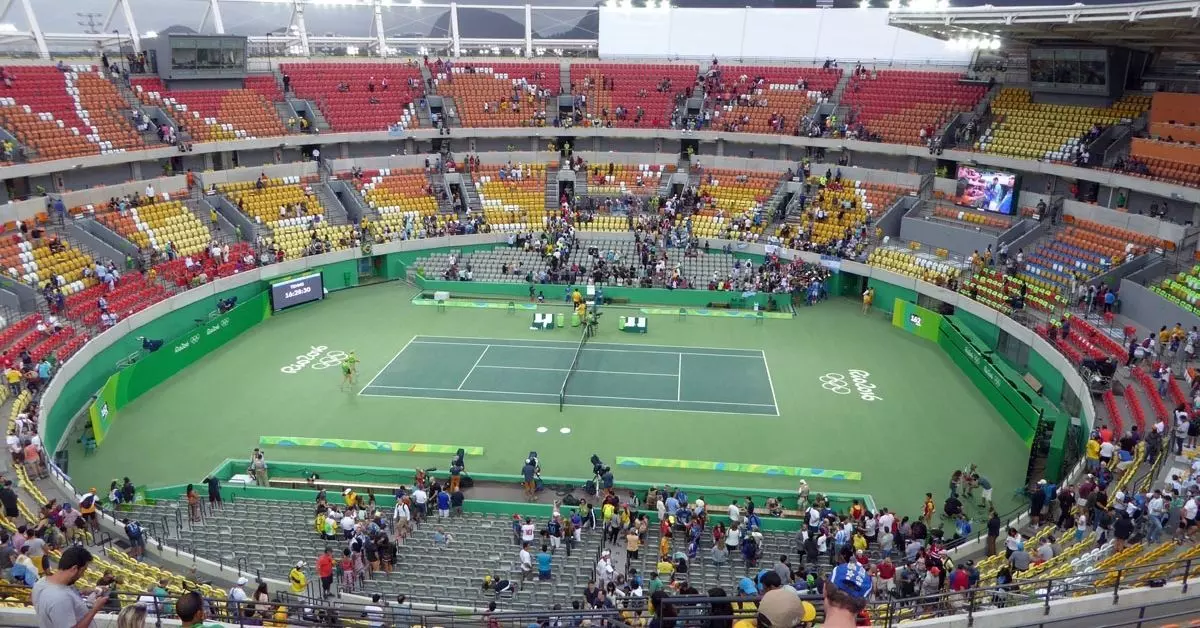Tennis
Know the rules, scoring, and dimensions in tennis
A brief look at the scoring in Tennis, dimensions and rules of the game ahead of Tokyo Olympics 2020.

A total of 172 athletes in the sport of tennis will compete in the Tokyo Olympics at the Ariake Tennis Park.
There will be five events: men's singles, women's singles, men's doubles, women's doubles, and mixed doubles spanning from 24th July to 1st August. The events will be based on the single-elimination format with six rounds in single events, five rounds in double events, and four rounds in mixed double events. The losing sides in the semi-finals will vie for the bronze medal while the semi-final winners will compete for the gold and silver medal in the final.
Dimensions of tennis court
Tennis is played on a rectangular court with separate dimensions based on single and double events. While a court has the dimensions 78x27ft during single events, there is an additional Doubles Alley at the wide areas of 4.5ft each on each side which makes it a 78x36ft court.
The dimensions of the area between the service line to the baseline is 18x27ft in case of single events and 18x36ft in double events. There is a division made on each side of the net to separate the No Man's land and left and right service boxes. Each service box is of 21x13.5ft dimensions adjacent to the net.
Rules of Tennis
Since Tennis is a racquet sport, it is played by two sides of players/teams on either side of the net with the aim of winning the maximum number of points. Each side wins a point on four conditions:
The opposition makes a double fault serve.
The opposition hits it wide of the sideline.
The opposition hits it over the baseline.
The opposition fails to hit a shot after a single bounce.
While Serving, a different set of rules comes into play. The side serving needs to get their serve bounce inside the Service boxes across the other side i.e if the service is being made from the left side of the centre mark on the baseline, the service has to have its bounce on the left service box on the other side of the net.
If the service hits the net and trickles down into the service box, there is an additional service without the first fault, But if the service hits the net, or trickles wide of the sidelines after hitting the net, misses the service boxes, it is counted as a fault. Consecutive faults mean the opposition earns a point.
Scoring in Tennis
Unlike most racquet sports, Tennis has a different set of scoring. Each side starts with 0-0 on the scorecard, which is also known as 'Love all' since the score zero is termed 'love' in tennis. The scoring sequence follows in 15, 30, and 40. If sides are tied at 40-40, deuce comes into play. Deuce requires each side to win consecutive points to win the game. Players switch ends of the court on odd games.
The side reaching 6 set wins, takes the set. It is necessary that each side wins 6 sets with a difference of at least 2 set points. If there is a situation where the setpoints are 5-5, the side with 7 set wins will win the set. If the set scores are 6-6, a tiebreaker game is played. The first side to score 7 points with a difference of two, takes the set by 7-6.
The format used in a Summer Olympics tennis event is the best of three sets, meaning the side winning three sets prevails with an option of a tie-breaker if the setpoints are equal. Single events will require first to reach 7 points in case of tie-breakers while sides have to reach 10 points in double event tie breakers.

